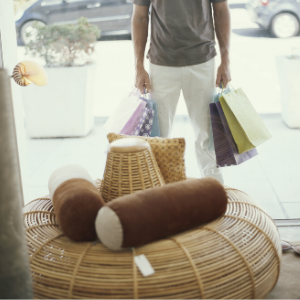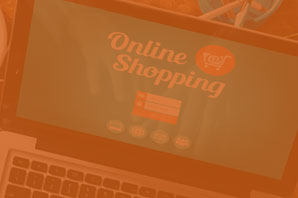Across the country, many areas have implemented new strategies for reopening the economy in a new phase of social distancing. Retailers in these areas breathe a sigh of relief, but it’s not like store owners can flip the switch and expect business to return as usual. Now it’s time to plan your reopening or recovery in the community. We’re going to outline some of our tips for COVID-19 retail recovery for store owners. Strategize on ways to refocus and regrow your business after the stricter social distancing standards have lifted.
Maintain Online Retail Store
When many showrooms closed, retailers who were ready to take action spent time maintaining their online store. They understood what others did not: the online store was their only sales channel. For many, this shift happened overnight. Website optimization, new virtual shopping tools, and adding eCommerce shopping carts were on the list for success-driven retailers. And many of those companies were able to maintain their leads and write new business during the crisis.
For those companies, the continuation of this strategy will keep improving during COVID-19 retail recovery.
The world of retail has changed. And while your website isn’t going to replace your brick-and-mortar experience, there’s going to be a rise in expectation from customers to conduct business as much as possible in a social distancing way. This recovery is built on two new types of customer profiles you need to understand.
Understanding New Consumer Profiles
Before your store felt the impacts of COVID-19, there were buyer personas that were the central point of your business. Those personas determined how you planned your online strategy and marketing message. And while they are mostly still intact, they’re not the priority.
Coming out of the pandemic, there are now two types of customers for your retail store: The Willing Consumer and The Cautious Consumer. There will be shoppers ready to walk into showrooms but they’ll expect a different in-store experience than before. And there will be shoppers who are more cautious about traveling into public shopping spaces.
The Willing Consumer
This is the consumer who is still using online search to find information about home furnishings. They’re researching and making buying decisions. But they’re ready to use the showroom to complete their purchase. That’s what makes this a Willing Customer; coming into the retail store.
Willing consumers are ready to leave the house. They’ve been cooped up in their homes for weeks. But they still want to be safe in their public interactions. So their online to offline (O2O) will be strategic. It will rely on Product, Proximity, and Preparation.
-
- Product: Will you have the product they’re looking for in the store for purchase? They aren’t going in to browse products. Willing consumers will spend time online finding the right product to see and buy in the store.
- Proximity: Once they find the product, they’re going to look for the right place to buy it. Studies show that during the crisis, when retailers did remain open, shoppers were looking for a product close to their location. And consumers will continue to have this social distancing mentality. Your store’s proximity to the consumer will determine your chance to acquire that customer.
- Preparation: The last step is preparation. Consumers will look for the product, identify the best store that carries the product within their proximity, and prepare for the visit. This means appointment-setting. Consumers who are willing to travel to a retail store and purchase their desired product want to continue safe social interactions. And retailers who promote special appointment-setting for their shopping experience will find more consumers willing to travel to the store. This practice will make your shoppers feel safe and prepared for the in-store shopping experience.
The Cautious Consumer
On the other side of this coin is the Cautious Consumer. This is the shopper who will by all intents and purposes remain in a social distancing shopper. Primarily spending time online and avoiding the store shopping experience. Virtual shopping retailers or eCommerce retailers will find this consumer relying on their services.
If you haven’t built an online shopping experience for the cautious consumer, you’ll want to review the next steps.
Enhance Digital Commerce
Technology has the connotation of being cold and impersonal. But during this pandemic, we saw technology bring stores and customers together. And retailers had contactless sales because of technology. So why would we abandon it? 
Digital commerce doesn’t have to include a transaction in a shopping cart. In fact, most of what we consider digital commerce happens without the online checkout.
Requests for information on products featured online, appointments set through online campaigns, LiveChat interaction that leads to an appointment, all of these are elements of digital commerce that many retailers are using today. And during the COVID-19 retail recovery period, it will be even more critical to support and manage these channels.
Because the fact is, people are still going to shop online. But buying a big-ticket item like a brand new customized sectional sofa isn’t one you’d ordinarily buy online. You’re going to have in store visitors to complete the buying process. Use your online store and digital commerce tools to handle as much of the buying process as possible. Then bring the client to your store for the final step and purchase, if you don’t have a transactional shopping cart. The COVID-19 impact on retail means that leveraging digital commerce is no longer an option. It’s the new normal for businesses that want to survive.
How to Maintain Digital Commerce Tools
So retailers need to plan for maintenance of these online tools. And for those showrooms that start to open, use your in-store staff to maintain these tools. Using online tools in the showroom can keep your staff active, keep your online shoppers engaged, and continue writing new business as a pattern of less social distancing emerges. Two of the most valuable online tools to improve digital commerce are LiveChat and your own website forms.
- LiveChat- train your sales associates on how to interact and respond to LiveChat inquiries on the website. When there isn’t an active appointment or activity in the store, they can staff your online showroom with the LiveChat tool. This will connect your salesperson with a customer who isn’t ready to come into the store.
- Requests for Information– With online traffic maintaining its importance, you need to maintain your lead follow up. Use your team to follow up with these inbound requests. Retailers who have a quick response to quotes or product information have a more likely chance to make the sale. Start a training process for your sales team and measure how effective you are with lead follow up. Always work to shorten the response time and lead it to an appointment setting goal.
Continue to measure how many leads you get from your digital commerce. It will help you strategize the right budgets for the right tools during COVID-19 retail recovery.
Watch the Trends
Trends in online search will illustrate the path for you to take in your online strategy.
Watching trends can identify the next step that you should take with your marketing strategy or your promotional strategy. Think of it like getting a roadmap and knowing what turn is coming up. That’s what can happen when you monitor trends for online search.
We monitor trends in online search through our digital marketing team. Before the widespread quarantine and social distancing rules, living room furniture and patio furniture were the top searched items online. It matched standard search trends for this time of year. However, once the pandemic started to take shape, we saw a stark increase in the number of online searches for home office furniture and living room furniture.
And it made sense. People were now spending more time at home whether furloughed, homeschooling or simply working from home. And many weren’t set up for this new normal when it came to home furnishings. Retailers who were monitoring these trends were able to capitalize on their promotions in those categories. Showing up higher in search results for local searches in those categories. As we enter the COVID-19 retail recovery stage of this pandemic, monitoring trends will be as important as they were during the strictest social distancing guidelines.
Here are some free resources that will help you keep track of trends if you don’t have a marketing team to help you.
- Google Trends
- Think With Google
- Statista
- Social media
Trends aren’t the rule but they can be the guideposts that keep your strategy aligned with the market.
Communicate with Consumers
Another tip for success in COVID-19 retail recovery is around communication. And it’s a tip we talked about at the onset of this social distancing movement. 
In fact, early studies show that companies that communicated these guidelines and updated them have more favorable brand perception than others. Many of the retailers we service were early in the adoption process for COVID-19 messaging. Their shoppers and communities understood what to expect at any given time.
And as stores open up and states restart their economies, communication will be just as valuable.
It’s important to give customers expectations on how your store is adapting to the social distancing guidelines in your area. Your website and online properties like Google My Business and your social media pages should reflect how you’re keeping your staff and customers safe. Don’t leave your customers without knowledge of how they can interact with your store safely. The more transparency you can communicate early, the better your chances of getting the shopper will be.
Use Marketing Dollars Wisely
Marketing made a tremendous impact on the success of retailers during the thick of this crisis. As we come through COVID-19 retail recovery, it will be as important as ever. And we can help you learn from those strategies that worked.
SEO is still important. It was important before the pandemic. It was important during the pandemic. And it will be important in the COVID-19 retail recovery plan. We saw retailers who were focusing their marketing efforts on SEO be successful online. Search engines were filled with consumers searching for furniture. So when retailers were creating content and optimizing their websites for that trend shift, they witnessed an increase in website traffic.
Local SEO is especially critical. Local SEO helps Google and other search engines understand your proximity to the customer searching for information online. Remember when we talked about how important proximity is for shoppers in the recovery period? Make sure that your Local SEO strategy is focused on building your local reputation and search results for the products that matter today.
Take Advantage of Helpful Resources
You can’t (and shouldn’t) go through this COVID-19 retail recovery alone. And companies across the world are working hard to make sure you don’t have to. There are resources available for retailers and business owners. These resources range from learning opportunities to loans or financial assistance programs. More resources are available as we continue to recover from the crisis. And we encourage you to search out these resources for more information.
Small Business Association
Many companies have already bookmarked the SBA website as a go-to resource for COVID-19 news and opportunities. You’ll find information on this website regarding Small Business Guidance and Loan Resources that are available. Learn more by visiting https://www.sba.gov/page/coronavirus-covid-19-small-business-guidance-loan-resources
Facebook Small Business Grants Program
Facebook Small Business Grants Program is available to help small businesses around the globe use Facebook’s grant to:
- Keep your workforce going strong
- Help with your rent costs
- Connect with more customers
- Cover operational costs
You can learn more about this program by visiting: https://www.facebook.com/business/boost/grants
Google Ads Credit for SMBs
Google wants to help small and medium businesses stay in touch with customers during this time. Which is why they’ve developed a program to donate ad credits to use until the end of 2020. More information about this program can be found at: https://support.google.com/google-ads/answer/9803410
Stand for Small
This resource is one of many that are housing a place to view the options available for small businesses working on recovery from the crisis. This website features a great list of resources to:
- Make expenses manage
- Get shipping and deliveries back on track
- Help teams succeed
- Making business stronger online
- Get advice and tools for adapting business
Learn more at: http://www.standforsmall.com/
Along with the other great resources available through your manufacturers, associations, and partnerships, these online resources are a starting point to help you get advice and make it through the recovery process.
Here to Help in COVID-19 retail recovery
At MicroD we’re dedicated to helping you through this COVID-19 retail recovery process. For some, it may be starting sooner than others. But we hope that you’ll share this information with your teams and start building a plan for recovery today. If you have any questions about anything you’ve read here, please contact us.





